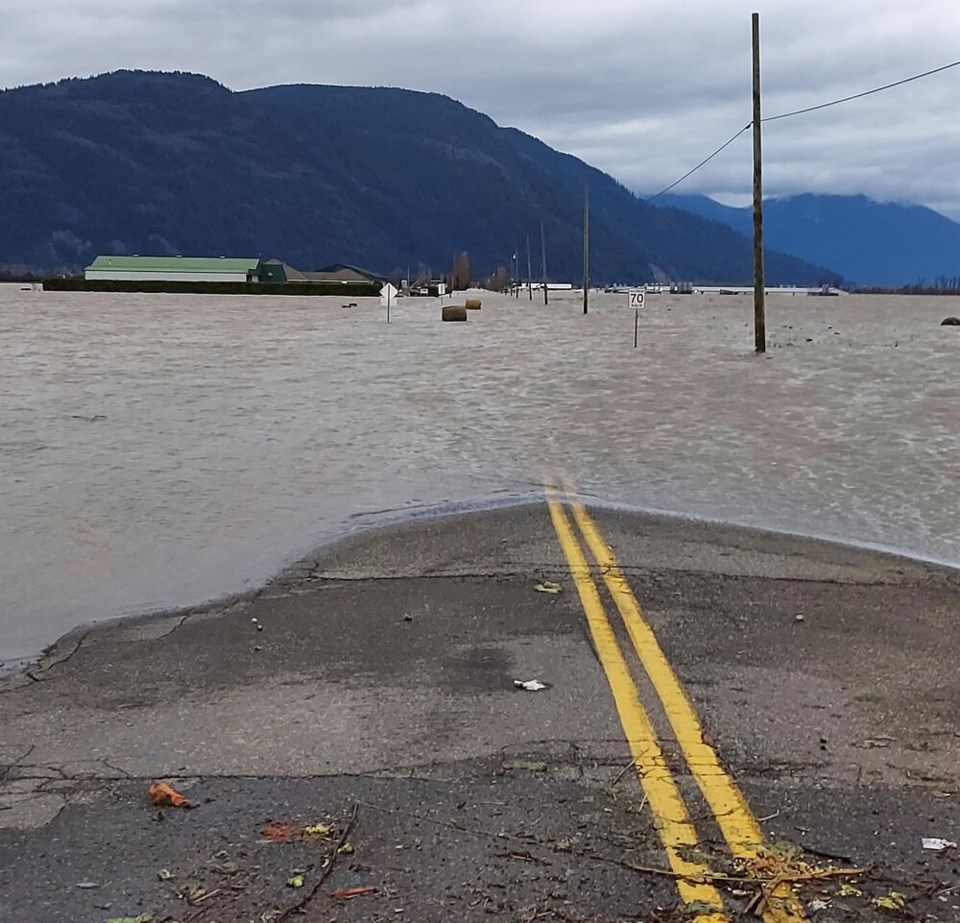Climate whiplash dominated the headlines in 2021: wildfire, flooding, storms all contributing to billions of dollars in damage across the planet.
As the year comes to a close, a new report has tallied the most financially devastating climate-driven disasters across the planet — and the B.C. floods are among them.
The province's November floods were estimated to have caused $7.5 billion in damage, making it the most expensive disaster in Canadian history and the fifth costliest climate disaster in the world this year, according to the report Counting the cost 2021: A year of climate breakdown. The full cost of flooding in B.C. is still being assessed.
The world's costliest climate disaster in 2021 was Hurricane Ida, the fifth-largest hurricane on record to make landfall in the United States. First hitting the Louisiana coastline in late August, the storm triggered flash floods across the American Seaboard into New York and caused an estimated $65 billion in damage.
The floods that hit Germany in July were estimated to have caused $43 billion in damage, whereas a deep freeze that gripped Texas in February is thought to have led to $23 billion in insured losses.
The report also considered the human toll of extreme weather events across the planet in 2021. Now thought to have killed over 1,000 people — including 595 in British Columbia — the heat wave that hit the U.S. Pacific Northwest and B.C. in late June sits alongside floods in South Sudan and drought in East Africa, Lake Chad and South America.
“In 2009, the Lancet said climate change was the biggest health threat to humanity,” says Dr. Courtney Howard, an emergency room doctor and community researcher in planetary health at York University.
“Climate change is still not in medical school curricula. There are 10 years of health professionals with climate change in their blind spot.”
Howard says the report offers a starting point to allocate resources and training now.
“Part of the value of a report like this is to put numbers on the cost we’re already seeing,” she says. “Humanity, as COVID has shown us, is one global community. What impacts people on the other sides of the world has consequences here as well.”
Originally from North Vancouver, Howard’s time as an emergency room doctor in Yellowknife has opened her eyes to the impacts of accelerated change in Canada’s North, where warming is moving at triple the pace of the global average. B.C. was hit hard by extreme weather in 2021; the march of change in the North, however, offers little reprieve every year.
As the permafrost slips away, many of her Indigenous patients tell her they are finding trees tipping over, lakes disappearing into the ground and traditional food is getting harder to find.
In 2014, wildfires smoke blanketed many communities in the area for two and a half months. Howard says emergency room visits due to asthma doubled. Wanting to understand more, she conducted a study looking at how people responded to the smoke.
“People told us that it felt scary. They felt disconnected from the land, they were uncomfortable, they had cabin fever,” she tells Glacier Media.
Those who prepared the most for fire — cleaning leaves out of gutters, clearing brush or having boats ready to escape — said they felt good about what they did even if the fire never approached their home.
Howard’s conclusion: “Preparing not only does good but it feels good.”
It’s a mantra that’s also good for government and personal finances, too.
When it comes to coastal flooding, B.C. is projected to suffer 68 per cent ($820 million) of Canada’s annual damage costs by 2070, according to a September study from the Canadian Institute for Climate Choices.
But by deploying some combination of sea walls, elevated buildings and beach nourishment, the report’s authors say the province could drop that bill by 90 per cent down to $60 million annually. Spending money now will save money later.
Grasping the scope of the world’s costliest extreme weather disasters of 2021 only brings the benefits of a preventative approach into sharper focus.
“It takes the knees out of any argument that we shouldn’t spend now,” says Howard.
Not all of the extreme weather events in the Christian Aid report have been directly linked to human-caused climate change (the heat wave has). What is clear is that the intensity and frequency of extreme weather seen across the globe this year is only expected to increase in the coming decades.
One study published in Nature in July and cited in the report found “record-shattering extremes, nearly impossible in the absence of warming, are likely to occur in the coming decades.” In the mid-latitudes, where much of Canada’s population is concentrated, such events could occur as often as once every six years.
The probability that they will occur all depends on how much carbon is pumped into our future atmosphere.
In addition to ranking 2021's costliest extreme weather events, Christian Aid is calling for countries around the world to make reducing greenhouse gas emissions a top priority.
Richer countries, it adds, have done the most to destabilize the world climate system with emissions but experience less widespread suffering than those living in poorer countries.
It suggests governments set up a fund to address the loss and damage caused by climate change by the time the UN climate change Conference of the Parties (COP27) wraps up in 2022.
“There’s a lot of opportunities to save lives,” says Howard. “Any time we decrease our use of fossil fuels, we can keep people out of the emergency department.”




